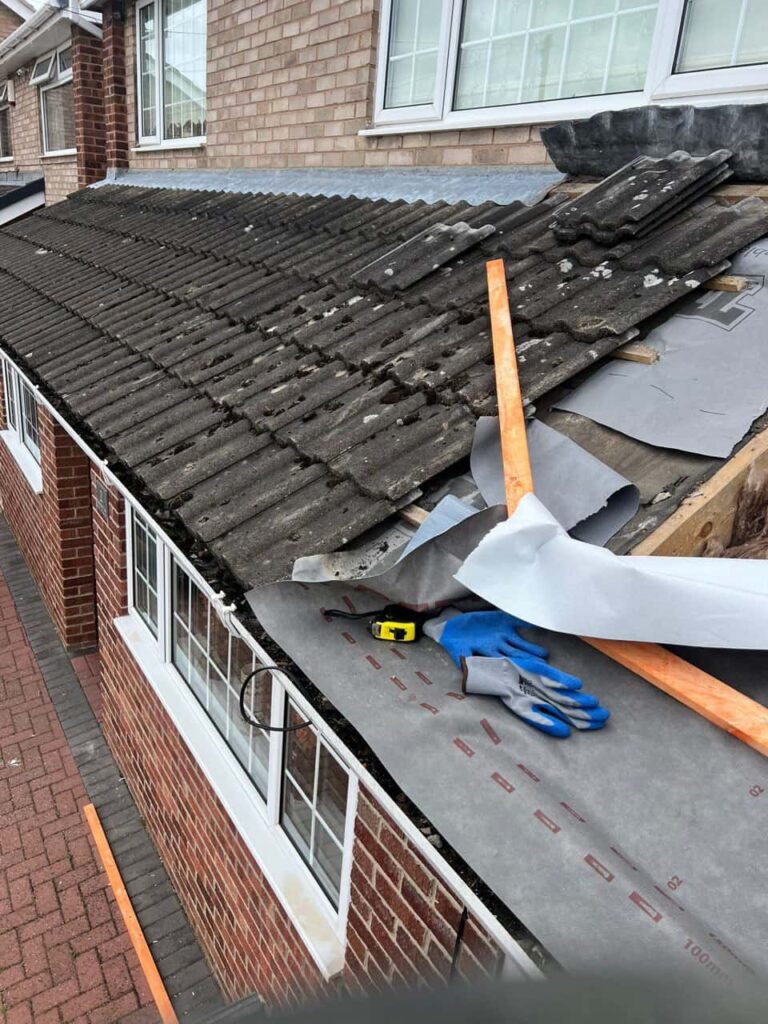Introduction: The design of your roof plays a pivotal role in maintaining a leak-free roof. Various architectural choices can significantly impact the likelihood of leaks, making it essential for homeowners to understand how roof design influences leak occurrence. At Newmarket Roofing Repairs, we are dedicated to helping you safeguard your home by providing insights into how different roof designs can affect leak prevention and what steps you can take to mitigate potential issues.
The Impact of Roof Design on Leak Risk
- Roof Slope and Pitch
- Steep Roofs: Roofs with a steep slope allow water to run off quickly, reducing the chances of water pooling and penetrating the roofing materials. This design is particularly effective in areas with heavy rainfall or snow.
- Low-Slope Roofs: Roofs with a low pitch are more susceptible to leaks due to slower water drainage. Water can accumulate and seep through seams or damaged areas, increasing the risk of leaks.
- Roof Shape
- Gable Roofs: This traditional roof shape, with two sloping sides that meet at a ridge, offers excellent water runoff. However, gable ends can be vulnerable to wind-driven rain, leading to leaks if not properly sealed.
- Hip Roofs: With slopes on all four sides, hip roofs are more resistant to high winds and provide better water drainage than gable roofs. They are less prone to leaks but require more complex flashing and sealing.
- Flat Roofs: Common in modern architecture and commercial buildings, flat roofs are prone to water pooling and require robust waterproofing measures to prevent leaks.
- Roof Features
- Valleys: The areas where two roof planes meet, known as valleys, are particularly vulnerable to leaks due to the concentration of water flow. Proper installation of valley flashing is crucial to prevent water ingress.
- Dormers: Dormer windows add aesthetic appeal and space to a home but also introduce potential leak points. Proper flashing and sealing around dormers are essential.
- Skylights and Chimneys: These features can be leak-prone if not correctly integrated into the roof design. Quality flashing and regular maintenance are vital to prevent leaks around these areas.
- Roofing Materials
- Asphalt Shingles: Popular for their affordability and ease of installation, asphalt shingles provide good water resistance when properly installed. However, they can be susceptible to wind damage and require regular maintenance.
- Metal Roofing: Known for its durability and longevity, metal roofing is excellent at shedding water and withstanding extreme weather conditions. Proper installation is key to preventing leaks at seams and fasteners.
- Tile and Slate Roofing: These materials offer exceptional durability and aesthetic appeal. They are highly effective at preventing leaks, but their weight requires a robust roof structure and careful installation to avoid cracks and displacement.
Tips for Mitigating Leak Risks in Different Roof Designs
- Ensure Proper Installation: Professional installation is crucial regardless of the roof design. Hiring experienced roofing contractors ensures that all aspects of the roof, including flashing, sealing, and drainage systems, are correctly implemented.
- Regular Maintenance: Regular roof inspections and maintenance can identify and address potential issues before they become major problems. This includes clearing debris from gutters, checking for damaged shingles, and inspecting flashing and sealants.
- Quality Materials: Invest in high-quality roofing materials and products that offer better durability and resistance to leaks. While the initial cost may be higher, the long-term benefits are worth the investment.
- Effective Drainage Systems: Ensure your roof has an effective drainage system to prevent water pooling. This includes properly installed gutters, downspouts, and drainage channels.
- Address Vulnerable Areas: Pay special attention to vulnerable areas such as valleys, dormers, skylights, and chimneys. Regularly inspect and maintain flashing and sealants around these features.
- Consider Climate: Choose a roof design and materials suitable for your local climate. For instance, steep roofs are ideal for areas with heavy rainfall, while metal roofs are excellent for regions with extreme weather conditions.
Conclusion: Understanding how roof design influences leak occurrence is essential for maintaining a durable and leak-free roof. By considering factors such as slope, shape, features, and materials, homeowners can make informed decisions to minimise the risk of leaks. Regular maintenance and professional installation are key to ensuring the longevity and effectiveness of your roof.
Call us on: 01638 596 581
Click here to find out more about Newmarket Roofing Repairs
Click here to complete our contact form and see how we can help you with your roofing needs.

